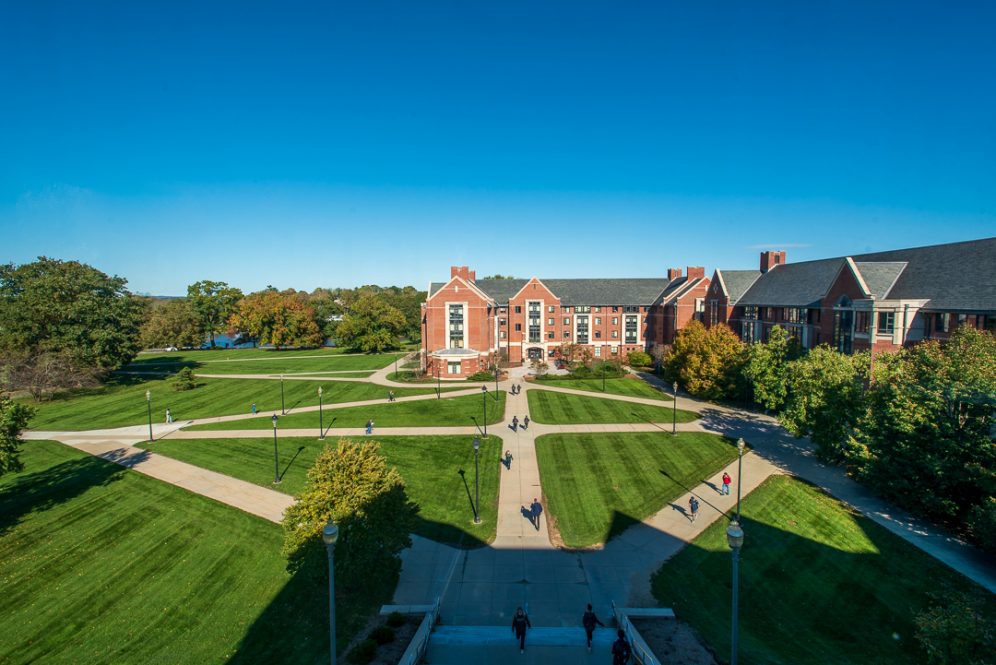UConn is taking the next step toward a potential new residence hall on South Campus, which would help the University in updating its housing stock to better support students in their academic and social experiences.
The Board of Trustees on Wednesday gave approval for University officials to move forward with the design phase for the proposed residence hall, related utility infrastructure, and landscape improvements.
The proposal has been part of the UConn Master Plan for the Storrs campus since its 2015 update and was also envisioned in the Next Generation Connecticut initiative, which the General Assembly approved in 2013 to catalyze research, academic excellence, and economic growth.
The University received its first design of the proposed residence hall in 2015, but the project was temporarily placed on hold as other Next Gen projects were under way, and as uncertainties lingered with the state budget and its appropriation levels for UConn.
The board’s vote Wednesday does not bind the University to building the residence hall until and unless a construction budget and other related agreements are approved, but allows it to update the original 2015 design to predict costs, a new timeline, and other details.
It would also conform to Connecticut High Performance Building regulations and be registered as a LEED project, with a target goal of achieving LEED Gold rating based on environmentally friendly development and operations.
The proposal is part of a broader consideration of the University’s current student housing stock and future needs, envisioning a residence hall with 600 to 650 beds and investigating construction of a new dining hall with 600 to 700 seats.
It would be built near the existing South Campus Residence Halls to create a shared courtyard between that complex and the new building.
The original 2015 design was a traditional residence hall, but in response to a student housing study conducted in 2020, the building will be redesigned as an all-suite building. If all stays on schedule, it would open to student occupancy in fall 2024.
UConn houses between 65% to 70% of its undergraduate students on campus each year, one of the highest on-campus residency rates in the nation.
Several trustees have said envisioning the future of on-campus student housing facilities is one of the most important issues the University would face in coming years, particularly since appropriate student housing is so critical to supporting the kind of life-transformative educational experiences that UConn offers, including affinity communities.
Creating facilities that are modern, up to date, and will best meet the needs of future students is essential not only to recruitment and retention efforts, but also to ensuring they have an on-campus residential environment that supports academic success.
UConn currently has 18 residential communities ranging from pre-war historically noteworthy buildings in the East Campus complex to the five-year-old Peter J. Werth Tower in the Hilltop area. About two-thirds of the housing stock consists of traditional double or single units.
Student interest in on-campus living has been historically strong, with about 11,500 to 12,500 students in the residence halls at Storrs in an average year.
In a regular year, almost 60 percent of UConn’s on-campus students are freshmen and sophomores, with those younger students most heavily concentrated in the traditional units with roommates. However, students at all levels have told the University that they prefer suites and apartment-style living because of the independence, community, and convenience they offer.
The $6.5 million design phase budget for the South Campus residence hall project will be paid through state bond funds specifically approved for Next Gen projects and those of the initiative’s predecessor, UConn 2000. The same funding was used for the Werth Tower, which opened in summer 2016.



